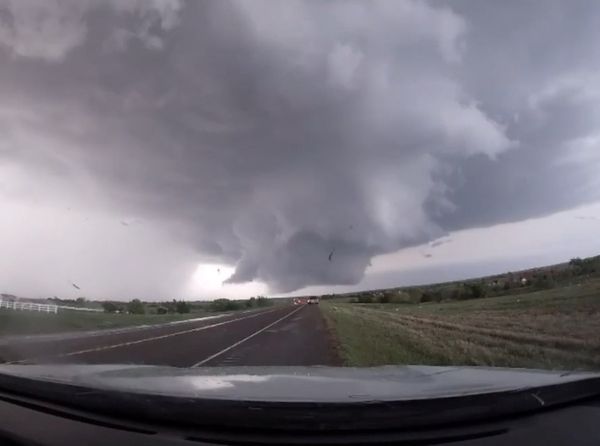EADS, Colo. — Colorado’s Sand Creek Massacre National Historic Site marking one of the nation’s bloodiest assaults on Native people will more than double in size to cover more than 6,500 acres of shortgrass prairie — a broadening federal project in tandem with tribal leaders.
“This story is part of America’s story,” Interior Secretary Deb Halaand declared Wednesday at the site.
Flanked by Senators John Hickenlooper and Michael Bennet, Halaand said it was “our solemn responsibility” as federal caretakers of national treasures “to tell the story of our nation” and announced the acquisition of an additional 3,478 acres as part of the nation’s $900 million annual Land and Water Conservation Fund spending.
The Northern and Southern Cheyenne and Arapaho Tribes consider this land near the southeastern Colorado town of Eads sacred. The expanded site, to be managed by the National Park Service, is intended to improve recreational opportunities on public lands, better interpret history, and protect the watersheds and wildlife.
“The events that took place here forever changed the course of the Northern Cheyenne, Northern Arapaho, and Cheyenne and Arapaho Tribes,” said Haaland, from the Laguna Pueblo tribe in New Mexico, the nation’s first Native American cabinet member.
“We will never forget the hundreds of lives that were brutally taken here — men, women and children murdered in an unprovoked attack,” she said. “Stories like the Sand Creek Massacre are not easy to tell but it is my duty — our duty — to ensure that they are told.”
She, NPS director Chuck Sams and Director of the Colorado Department of Natural Resources Dan Gibbs gathered at the site Wednesday morning with tribe members, along with Colorado’s Lieutenant Governor Dianne Primavera and representatives of the Conservation Fund, Great Outdoors Colorado and the National Park Foundation who enabled the land acquisition.
Expanding the site builds on efforts to preserve shortgrass prairie ecosystems in the region. Conservation Fund officials played a key role enabling the land acquisition “from a willing seller,” officials said.
The federal government in 2007 established the historic site commemorating the attack by U.S. soldiers on November 29, 1864 — an unprovoked assault over seven hours on an encampment of about 750 Native people. During the attack, the villagers scrambled for shelter in the high banks along Sand Creek. As they fled, soldiers killed and wounded many. More than half of the estimated 230 dead were women and children.
This happened at the site, about 170 miles southeast of Denver, at dawn — a massacre conducted by about 675 soldiers.
U.S. Cavalry Colonel John M. Chivington, a Methodist minister, led the attack using small arms and howitzer fire to kill as many Cheyenne and Arapaho people as possible. While many escaped the initial attack, soldiers followed them along the dry creek bed. The soldiers shot them — women, children and the elderly — as they struggled on the sandy terrain.
At one point, according to park service documents, fleeing people frantically dug pits and trenches along the sides of the creek bed, trying to avoid bullets. Some tried to fight back.
Along the creek, soldiers fired from opposite banks and brought forward howitzers to drive desperate villagers from their cover. Soldiers committed atrocities, taking human body parts as trophies, before leaving the massacre site two days later with 600 captured horses.
The dead included 13 Cheyenne peace chiefs and one Arapaho chief — deaths that disrupted tribal governance for generations.







